Charleston Currents #12.05 | Dec. 2, 2019
COLOR AND SOUNDS: The new “Lights of Magnolia” exhibit at Magnolia Plantation and Gardens offers a thrilling nighttime experience to guests. Take a look at contributing photographer Rob Byko’s visit below in today’s Photo Focus. (Photos by Rob Byko)
 PHOTO FOCUS: “Lights of Magnolia” explodes with color, thrills, sounds
PHOTO FOCUS: “Lights of Magnolia” explodes with color, thrills, sounds
COMMENTARY: Free press needed now more than ever
IN THE SPOTLIGHT: SCIWAY
GOOD NEWS: 33 schools take part in Giant Greeting Card Competition
FEEDBACK: Send us your thoughts
MYSTERY PHOTO: Lowcountry dawn
S.C. ENCYCLOPEDIA: Charles Cotesworth Pinckney
CALENDAR: Homegrown Holiday Bazaar set for Dec. 7 on Johns Island
“Lights of Magnolia” explodes with color, thrills, sounds
By Rob Byko, contributing photographer | Approaching Magnolia Plantation at night through the gates along a winding drive, you can tell you’re in for a treat. Over the treetops and through the underbrush, you see your first glimpse of the brilliant lights in colors too numerous to mention.
Entering the festival grounds, the evening explodes in color and sound. The lights’ reflections wash over joyful faces of patrons walking the garden paths. The light dances along ponds and through the eyes of children who seem lost in the fantasy.
An easy walking trail guides you first along a fairy tale of characters, followed by flowers and fauna taller than your head. Then you meet huge butterflies and ladybugs, pandas and peacocks. Turn a corner and you find a kaleidoscope from the animal kingdom featuring playful lions, stoic zebras and tigers so vivid they seem real.
Finally, the tour returns to fantasy, placing you face-to-face with a 200-foot-long dragon whose majestic head soars more than 45 feet in the air. The entire dragon’s body is made of “scale,s” but looking more closely you see more than 26,000 porcelain china plates held together only by thread and your imagination.
- Learn more about Magnolia Plantation and Gardens’ new Lights of Magnolia exhibit, which is on display through March.
Contributing photographer Rob Byko is a Realtor who lives on Sullivan’s Island.
- Have a comment? Send to: editor@charlestoncurrents.com
BRACK: Free press needed now more than ever
By Andy Brack, editor and publisher | The other day after a church meeting, someone commented, “We need a free press now, more than ever.”
Let that sink in.
 Why would someone say that? Is it because he doesn’t like the bombast of President Trump or she doesn’t like the preening of House Speaker Nancy Pelosi? Is it because they’re worried about the legitimacy of what they read on Facebook, Twitter or the Internet?
Why would someone say that? Is it because he doesn’t like the bombast of President Trump or she doesn’t like the preening of House Speaker Nancy Pelosi? Is it because they’re worried about the legitimacy of what they read on Facebook, Twitter or the Internet?
More than likely, it’s any or all of those things — but also something bigger: Trust. Americans, divided into warring factions of what they believe, increasingly have problems with trusting information that they receive from institutions in government as well as those that say what’s going on in government.
We are living in a period of history where we have more information than ever, but it’s blurred by unrelenting negative talk, “fake news,” lies, misrepresentations, soundbites and incomplete information. We are so overloaded by information that we find it hard to sift through and process everything before the next assault hits.
So how can you manage too much information? Perhaps you can curb and diversify your media diet. Find multiple sources of information — not just newsjunk put out by the tribe that spouts what you want to hear. If you’re a Democrat, you might need to focus less on The New York Times and more on The Wall Street Journal. If you lean Republican, tune in occasionally to CBS or PBS instead of Fox.
Despite what some people believe, reporters do not exist to make up news. Reporters are objective and report what they see, hear and uncover.
 “Our democracy depends upon citizens having information about the activities of our government, and a press free from governmental control is essential to the functioning of our society,” says Jay Bender, longtime legal counsel for the S.C. Press Association.
“Our democracy depends upon citizens having information about the activities of our government, and a press free from governmental control is essential to the functioning of our society,” says Jay Bender, longtime legal counsel for the S.C. Press Association.
The reason there is a constitutional protection for freedom of the press is because the British crown censored information during colonial times, Bender said. Patriots during the American Revolution fought to be free of the shackles of royal rule, including its curbs on information.
Then, as now, more information is better than less. Attacking verifiable facts is counterproductive and anti-democratic.
“The instinct of those in government today to attack the press and restrict the flow of information to the public is inconsistent with a government by the people and for the people,” Bender said. “A vigorous, free press is a wall between us and an autocracy, and must be defended for our democracy to survive.”
Richard Whiting, executive editor of the Greenwood Index-Journal, suggests the misplaced chants of “fake news” or the press being an “enemy of the people” are trickling into our towns and counties.
“It’s not just mainstream media that is under attack,” he said. “It’s the hometown newspaper that shares with its readers little Johnny’s victory on the football field, Suzie’s volleyball win. It’s the hometown paper that shares the story of a family’s struggles as their child battles a life-threatening disease, or the family burned out by a house fire. It’s the hometown paper that attends the school board, town council and county council meetings while Mom and Dad busy themselves with their lives, their children’s lives.”
And the irony, he says, is that those very same people will shout and raise Cain — “How did this happen? Why didn’t someone tell us?” — when a local, duly-elected governmental body votes to raise taxes or change zoning. Had they been paying attention — by reading their local newspaper — they might have acted upon solid information to create change, instead of grumbling and picking up the pieces later.
“A free press is essential to our democracy,” Whiting said. “It serves the public by being the watchdog of government so people can go about their daily lives. But more than that, we are the community’s mirror, reflecting the good, the bad and the ugly as we provide essential news and information right along with the stuff that crowds refrigerators and gets tucked away in scrapbooks.”
The free press is not your enemy. Her reporters keep America honest a lot more than her politicians do. Ask questions. Consume diverse information sources. Challenge your media comfort zone. To do less is to get sucked into what anti-democratic forces desire.
- Have a comment? Send to: editor@charlestoncurrents.com
SCIWAY
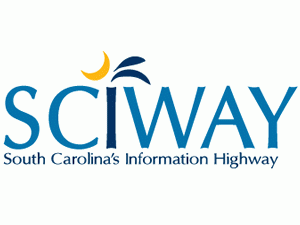 The public spiritedness of our underwriters allows us to bring Charleston Currents to you at no cost. Today we shine our spotlight on SCIWAY. Pronounced “sky-way,” SCIWAY is South Carolina’s Information Superhighway — the largest and most comprehensive directory of South Carolina information on the Internet. It includes thousands of links to other South Carolina Web sites, including Charleston Currents, as well as an amazing collection of maps, charts, articles, photos and other resources.
The public spiritedness of our underwriters allows us to bring Charleston Currents to you at no cost. Today we shine our spotlight on SCIWAY. Pronounced “sky-way,” SCIWAY is South Carolina’s Information Superhighway — the largest and most comprehensive directory of South Carolina information on the Internet. It includes thousands of links to other South Carolina Web sites, including Charleston Currents, as well as an amazing collection of maps, charts, articles, photos and other resources.
- To learn more about this extraordinary information hub that 7 million people visit a year, go to: http://www.SCIWAY.com.
- To meet all of our underwriters, click here.
33 schools take part in Giant Greeting Card Competition
Staff reports | First Baptist School in Charleston, Summerville Catholic School and Orange Grove Charter School in West Ashley won top awards in their divisions in the annual Giant Greeting Card Competition at the Holiday Festival of Lights.
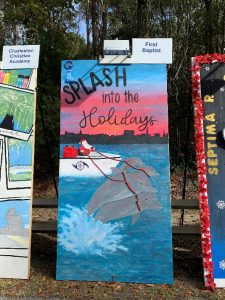 Entries in the school art competition, which was held by Charleston County Parks, are on display in Santa’s Village during the annual event, which runs nightly through Dec. 31 at James Island County Park.
Entries in the school art competition, which was held by Charleston County Parks, are on display in Santa’s Village during the annual event, which runs nightly through Dec. 31 at James Island County Park.
This year’s competition had 33 entries on display from Charleston, Berkeley and Dorchester County student groups in elementary, middle and high school divisions. The winning top three schools in each division, and four honorable mention winners, received a trophy and cash award to use for their school arts program. Winners were:
High school division: 1st Place: First Baptist School; 2nd Place: Cathedral Academy; 3rd Place: Crown Leadership Academy
Middle school division: 1st Place: Summerville Catholic School; 2nd Place: Ridge Christian Academy; 3rd Place: Camp Road Middle School
Elementary school division: 1st Place: Orange Grove Charter; 2nd Place: Nativity School; 3rd Place: Live Oak Little School
Honorable mentions: Harbor View Elementary; Charleston SDA School; Live Oak Preparatory School; Northside Christian Academy
- To learn more about the festival, now in its 30th year, click here.
Also in recent news:
![]() ACLU hires new state director. The American Civil Liberties Union of South Carolina, which is based in Charleston, has hired Frank Knaack as its next executive director. He will come on board in January. He most recently led the Montana Innocence Project and prior to that he led the Alabama Appleseed Center. He also has held positions at the National ACLU and at ACLU affiliates in Virginia and Texas.
ACLU hires new state director. The American Civil Liberties Union of South Carolina, which is based in Charleston, has hired Frank Knaack as its next executive director. He will come on board in January. He most recently led the Montana Innocence Project and prior to that he led the Alabama Appleseed Center. He also has held positions at the National ACLU and at ACLU affiliates in Virginia and Texas.
Lawmakers frustrated with state utility regulators. House and Senate members on both sides of the aisle are finding common ground in expressing frustration with the state’s utility regulators. The S.C. Public Service Commission has drawn renewed scrutiny after a November staff directive that would create the cheapest solar rates in the nation, which solar industry advocates say would effectively ending new solar investment in the state. The directive isn’t final yet. Some lawmakers see the proposal, which would slash utilities’ reimbursement for solar field generation and keeping contracts to 10 years, as an affront to the unanimously-passed Energy Freedom Act in May. Read more in the latest issue of our sister publication, Statehouse Report.
On protecting residents from lung cancer. New research from the American Lung Association says states like South Carolina need to do more to protect residents from lung cancer and aid in cancer-patient recovery. South Carolina ranks 36th in the nation for incidence of lung cancer, making its incidence of lung cancer above the national average. The state ranks 32nd for survival rates, mean those diagnosed with lung cancer in S.C. are less likely to survive than the national average. The nonprofit says state lawmakers need to support early lung screenings and protect health care access for those with pre-existing conditions. Read more.
- Have a comment? Send to: editor@charlestoncurrents.com
Send us your thoughts … or your rants!
We’d love to get your impact in one or more ways:
Send us a letter: We love hearing from readers. Comments are limited to 250 words or less. Please include your name and contact information. Send your letters to: editor@charlestoncurrents.com. | Read our feedback policy.
Tell us what you love about the Lowcountry. Send a short comment – 100 words to 150 words – that describes something you really enjoy about the Lowcountry. It can be big or small. It can be a place, a thing or something you see. It might the bakery where you get a morning croissant or a business or government entity doing a good job. We’ll highlight your entry in a coming issue of Charleston Currents. We look forward to hearing from you.
Lowcountry dawn
Try to figure out where the photographer stood when taking this photo of a sunrise in Charleston. Alternatively, what’s the photographer looking at through the lens? Extra credit: Answer both. Send your guess to: editor@charlestoncurrents.com. And don’t forget to include your name and the town in which you live.
Our previous Mystery Photo
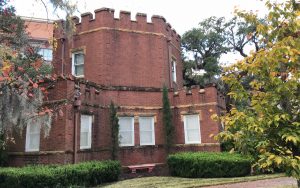 Our Nov. 25 mystery, “Interesting brick building,” has been known as the Waring Historical Library since 1969. Located on Ashley Avenue on the campus of the Medical University of South Carolina, the building originally was the Hoffman Library, erected in 1894 as a gift to Porter MIlitary Academy by the Rev. Charles Frederick Hoffman, rector of All Angels Episcopal Church in New York. In 1964, Porter merged with the Gaud School for Boys and the Watt School to become Porter-Gaud.
Our Nov. 25 mystery, “Interesting brick building,” has been known as the Waring Historical Library since 1969. Located on Ashley Avenue on the campus of the Medical University of South Carolina, the building originally was the Hoffman Library, erected in 1894 as a gift to Porter MIlitary Academy by the Rev. Charles Frederick Hoffman, rector of All Angels Episcopal Church in New York. In 1964, Porter merged with the Gaud School for Boys and the Watt School to become Porter-Gaud.
Congratulations to several alert readers who knew what the building was, including Charlestonian Legare Clement who figured it out when walking by the library last week. Hats off also to: James McMahon and Steven Stuckey, both of Charleston; Allan Peel of San Antonio, Texas; and George Graf of Palmyra, Va.
Peel also shared more history about the octagonal building: “According to the library’s web site, its mission is ‘to collect, preserve, and promote the history of the health sciences in South Carolina” and was “named for Joseph I. Waring, Jr., a local pediatrician and medical historian and the first director of the Historical Library.’. Apparently, the library houses some pretty fascinating (and gross!) artifacts, including amputation saws, a box of artificial eyes, bone scrapers, and other horrifying sounding surgical tools like an ‘Artificial Urethral Sphincter’ and a ‘Bermingham Nasal Douche.’ The library also includes the Macaulay Museum of Dental History, which features a collection of dental memorabilia, dental chairs and a traveling dentist’s chest of the Civil War era.
“The site of the building in the photo was originally the Charleston Arsenal, a U.S. Army facility that was seized by South Carolina State Militia at the outbreak of the American Civil War. According to Wikipedia, the Arsenal ‘was constructed in 1841 and served as a storage place for weapons, ordnance, and ammunition for the U.S. Army in antebellum days. The Charleston Arsenal produced a considerable amount of artillery and small arms ammunition during the Mexican–American War and up to the Civil War. During the Civil War, Confederate troops from South Carolina seized the arsenal in late December 1860, and held it for much of the war until it was finally retaken by Union troops when Charleston fell in 1865.’”
- Send us a mystery: If you have a photo that you believe will stump readers, send it along (but make sure to tell us what it is because it may stump us too!) Send it along to editor@charlestoncurrents.com.
Charles Cotesworth Pinckney

Portrait of Charles Cotesworth Pinckney, ca. 1773, by Henry Benbridge. It is in the collection of the National Portrait Gallery.
S.C. Encyclopedia | Patriot Charles Cotesworth Pinckney was born in Charleston on February 14, 1746, to Charles Pinckney, a lawyer and member of the provincial council, and Elizabeth Lucas, who helped introduce indigo cultivation in South Carolina. In 1753 Pinckney accompanied his family to London, where his father served as the colony’s agent until 1758. Young Pinckney received private tutoring before entering the prestigious Westminster School in 1761. Three years later he matriculated at both Christ Church College, Oxford, and at the Middle Temple, the London legal training ground. While at Oxford he attended lectures by the famed legal scholar Sir William Blackstone and listened to debates in the House of Commons pertaining to the American colonies. Pinckney was admitted to the English Bar in January 1769. Following a tour of Europe, he returned to South Carolina, where he began a successful legal practice.
Pinckney entered public service in 1769 with election to the Commons House of Assembly, where he represented St. John’s Colleton Parish during the remainder of royal rule. Pinckney also served in the local militia, eventually attaining the rank of colonel. In 1773 he was made attorney general for the judicial districts of Camden, Cheraws, and Georgetown. That same year, on September 28, he married Sarah Middleton, daughter of the wealthy and well-connected Henry Middleton. The marriage produced four children.
Through this marriage Pinckney became closely affiliated with some of the province’s leading radicals in America’s contest with Great Britain, such as Arthur Middleton, Edward Rutledge, and William Henry Drayton. By early 1775 Pinckney was a member of all the important revolutionary committees, from which he advocated aggressive measures, including stealing royal arms from the Statehouse, penning inflammatory epistles to backcountry inhabitants, and planning the defense of Charleston against a possible British attack. At the same time, Pinckney served in the extralegal Provincial Congress, where he assisted in creating and training a rebel army and chaired the committee responsible for drafting a temporary frame of government for the province.
Once hostilities erupted with Britain, Pinckney switched his role as a politician to that of a soldier. Appointed commander of the First Regiment of South Carolina troops, he assisted in the successful defense of Charleston at the Battle of Sullivan’s Island in June 1776. When the British moved north following this defeat, Pinckney followed to serve as an aide-de-camp to General George Washington. He participated in the battles of Brandywine and Germantown before rejoining the southern army to command a regiment in the expedition to East Florida and at the siege of Savannah.
During the defense of Charleston he commanded Fort Moultrie and made a futile attempt to convince General Benjamin Lincoln, commander of the southern army, to defend the capital at all costs. When Charleston fell, the British placed Pinckney under house arrest and made a hapless attempt to lure him away from the American cause. The British later sent Pinckney to Philadelphia, where he was exchanged in 1782. He rejoined the southern army but saw no further action. Pinckney’s first wife, Sarah Middleton, died in 1784, and he married Mary Stead in 1786.
Following the war, Pinckney devoted his efforts toward rebuilding his law practice and his rice plantations. In 1787 he served as a delegate to the constitutional convention, where he ardently and ably defended the exporting and slaveholding interests of southern planters. A staunch Federalist, Pinckney was important in South Carolina’s ratification of the federal Constitution in 1788. He later helped draft the state’s 1790 constitution.
Over the next several years Pinckney rejected President Washington’s numerous offers to serve in federal office—as commander of the army, as associate justice of the Supreme Court, as secretary of war, and as secretary of state—explaining that he needed to remain at home to restore his fortune. However, in 1796 Pinckney accepted Washington’s offer to serve as minister to France. The next year President John Adams appointed him as one of three commissioners to negotiate a treaty with the French government. When French diplomats demanded a bribe from their American counterparts to facilitate discussions, Pinckney is credited as having exclaimed, “no! no! Not a sixpense” and urged his government to raise “millions for defence but not one cent for tribute.” In 1798 President Adams, anticipating war with France, appointed Pinckney commander of the southern department of the United States Army. He was discharged from military service in 1800.
Pinckney returned to politics in the election of 1800 as the Federalist Party’s vice-presidential candidate. In 1804 and 1808 he was the Federalist candidate for president, but realizing that he had little chance of winning, he never actively campaigned. Instead, Pinckney devoted the remainder of his life to agricultural experiments (he was a member of the South Carolina Agricultural Society) and civic service. He helped establish South Carolina College in 1801 and served on its first board of trustees.
He also busied himself as president of numerous organizations, including the South Carolina Jockey Club, the Society for the Relief of Widows and Orphans of South Carolina, the Charleston Bible Society, the Charleston Library Society, the South Carolina Society of the Cincinnati, and the national Society of the Cincinnati. Near the end of his life Pinckney campaigned against dueling in South Carolina. He died in Charleston on August 16, 1825, and was buried in the cemetery of St. Michael’s Church.
— Excerpted from an entry by Keith Krawczynski. This entry may not have been updated since 2006. To read more about this or 2,000 other entries about South Carolina, check out The South Carolina Encyclopedia, published in 2006 by USC Press. (Information used by permission.)
Homegrown Holiday Bazaar set for Dec. 7 on Johns Island
Staff reports | You’ll find fun gifts and great food at the sixth annual Homegrown Holiday Bazaar from 10 am. To 4 p.m. Dec. 7 at Mullet Hall, 2662 Mullet Hall Road, Johns Island.
More than 100 vendors and farmers will be on location as well as holiday hayrides, an antique tractor show, and train rides and horse rides for kids. And be sure not to miss Santa and Mrs. Claus in the event’s Santa Land.
As your shopping, you can enjoy music from 10 am. To 1 p.m. by local DJ Reggie Diamond. He’ll be followed by White Jeep. Other activities include games, crafts, cookie-decorating, ornament-making and bounce houses. There’s also a silent auction supporting hosts.
- Admission and parking are free. Learn more here.
Also on the calendar:
 #GivingTuesday: All day Tuesday, Dec. 3. After the frenetic shopping and pace of Black Friday and CyberMonday, you might want to set aside a little something to give back to others on GivingTuesday, which is marked around the world as a day for generosity. To find 200-plus organizations that are participating from the Alliance for Full Acceptance and the Charleston Academy of Music to the American Red Cross and the YWCA of Greater Charleston, click here.
#GivingTuesday: All day Tuesday, Dec. 3. After the frenetic shopping and pace of Black Friday and CyberMonday, you might want to set aside a little something to give back to others on GivingTuesday, which is marked around the world as a day for generosity. To find 200-plus organizations that are participating from the Alliance for Full Acceptance and the Charleston Academy of Music to the American Red Cross and the YWCA of Greater Charleston, click here.
Elf the Musical: Seventeen shows from Dec. 4 to Dec. 22, Dock Street Theatre, 135 Church St., Charleston. Based on the beloved and hilarious 2003 Will Ferrell film, Elf The Musical by Charleston Stage tells the story of Buddy who mistakenly crawls into Santa’s bag of gifts and is transported to the North Pole. Tickets are $29 to $71. Learn more.
Madrigal feasts: 7 p.m. Dec. 4, at Circular Congregational Church, 150 Meeting St., and Dec. 5 and 6 at Alumni Hall, Randolph Hall, College of Charleston. The award-winning College of Charleston Madrigal Singers, conducted by Dr. Robert Taylor, will perform sacred and secular traditional holiday season carols in dinner theatre format featuring a madrigal feast and Renaissance entertainment. Tickets range from $50 to $70, sold in advance until two days prior to each performance. Learn more or reserve.
Black America: Resilient: Dec. 6 to Jan. 25, 2020, Redux Contemporary Art Center, 1056 King St., Charleston. The center offers this solo show that highlights the work of Dontré Major, a College of Charleston art graduate whose work takes a look at Black/African Americans in the United States during different periods throughout time. Each photograph is meant to emulate the feelings individuals had during these specific times, and touch on the struggle they went through to be seen as equals. There’s an opening reception from 5 p.m. to 8 p.m. on Dec. 6.
Tree lighting and fantasy parade: 6:30 p.m., Dec. 6, Charleston City Market, Market St., Charleston. Anson Square will be transformed into a glittering stage of fantasy with an ensemble of characters from some of Disney’s most loved films. A Fantasy Filled Family parade will start at 7 p.m., followed by the tree lighting. More.
That HOLIDAY Book Sale: Opens at 9 a.m., Dec. 6 and 7, Mount Pleasant Regional Library, 1133 Mathis Ferry Road. Looking for some extra stocking stuffers this Christmas? Come shop at the Charleston Friends of the Library Holiday Book Sale which will feature more than 15,000 books, CDs, and DVDs at low prices starting at $1.
Holiday market: 11 a.m. to 4 p.m., Dec. 7, Market Pavillion, Moultrie Middle School, 645 Coleman Blvd., Mount Pleasant. Enjoy a special Dec. 7 holiday market and craft show to get that special gift. Free parking. Lots of activities. More info.
Wine Under the Oaks: 1 p.m., Dec. 8, Boone Hall Plantation, 1235 Long Point Road, Mount Pleasant, SC 29464. Internationally-known saxophonist David Sanborn will headline this wine-and-food lovers’ dream. Admission ($75 with a pre-event discount) includes wine samples, gourmet food and holiday fun. More.
Author talk: 6 p.m., Dec. 12, Charleston Library Society, 164 King St., Charleston. Hear from G. Wayne Clough, the former Secretary of The Smithsonian Institution, G. Wayne Clough, as he talks about his book, “Things New and Strange: A Southerner’s Journey through the Smithsonian Collections.” Tickets are $5 for members and $10 for nonmembers. To purchase tickets, call 843-723-9912 or click here.
Holiday Festival of Lights: Opens 5:30 p.m., through Dec. 31, 2019, James Island County Park. Now in its 30th year, the Holiday Festival of Lights is open every evening, rain or shine, with closing set for 10 p.m., except Fridays and Saturdays, which close at 11 p.m. The show returns to make merry magical memories with its vibrant light show is one of Charleston’s most cherished holiday events, featuring an estimated two million dazzling lights. More.
Lights of Magnolia: 5:30 p.m. to 9:30 p.m., through March 15, 2020, Magnolia Plantation and Gardens, West Ashley. Enjoy nine acres of Chinese lanterns, dragons and more at the venerable garden’s new evening attraction. The lantern festival includes custom-designed installations of large-scale thematically unified lanterns, a fusion of historic Chinese cultural symbols and images that represent the flora and fauna of Magnolia. Learn more online. Tickets are $11-$26. On-site parking is limited, but shuttles are available. For more information and frequently asked questions, click here.
Early morning bird walks at Caw Caw: 8:30 a.m. every Wednesday and Saturday, Caw Caw Interpretive Center, Ravenel. You can learn about habitats and birds, butterflies and other organisms in this two-hour session. Registration is not required, but participants are to be 15 and up. $10 per person or free to Gold Pass holders. More: http://www.CharlestonCountyParks.com.
AREA MARKETS
Holiday markets are springing up all over. Click here to read where you can find 20 area holiday markets so you can buy local and be local. More: Charleston City Paper. In other regular markets:
- FRIDAYS/SATURDAYS: Night Market. Every Friday and Saturday from 6:30 p.m. to 10:30 p.m. for the rest of the year, you can shop with 108 vendors, including artists and craftsmen, at the night market on Market Street between East Bay and Church streets. It’s more than four blocks of local shopping and fun. Free.
- SATURDAYS: Johns Island Farmers Market operates each Saturday from 9:30 a.m. to 1:30 p.m. year-round with more than 50 local farmers and vendors, food trucks, music and more. The market is located on the campus of Charleston Collegiate School, 2024 Academy Road, Johns Island
MARKET NOTES: To help you keep up:
- The Mount Pleasant Farmers Market weekly market on Tuesdays finished in September. The next opportunity to shop is a special Dec. 7 holiday market and craft show at the market pavillion at Moultrie Middle School, 645 Coleman Blvd., Mount Pleasant. Time: 11 a.m to 4 p.m. Free parking. Lots of activities. More info.
- The West Ashley Farmers Market, typically held every Wednesday, had its last regular event of the year in October. More.
- If you have an event to list on our calendar, please send it to feedback@charlestoncurrents.com for consideration. The calendar is updated weekly on Mondays.
If you like what you’ve been reading, how about considering a contribution so that we can continue to provide you with good news about Charleston and the Lowcountry. Interested? Just click the image below.
OUR UNDERWRITERS
Charleston Currents is an underwriter-supported weekly online journal of good news about the Charleston area and Lowcountry of South Carolina.
- Meet our underwriters
- To learn more about how your organization or business can benefit, click here to contact us. Or give us a holler on the phone at: 843.670.3996.
OUR TEAM
Charleston Currents offers insightful community comment and good news on events each week. It cuts through the information clutter to offer the best of what’s happening locally.
- Mailing address: 1316 Rutledge Avenue | Charleston, SC 29403
- Phone: 843.670.3996
Charleston Currents is provided to you weekly by:
- Editor and publisher: Andy Brack, 843.670.3996
- Contributing editor, common good, Fred Palm
- Contributing editor, money: Kyra Morris
- Contributing editor, Palmetto Poem: Marjory Wentworth
- Contributing editor, real estate: Digit Matheny
- Contributing photographer: Rob Byko
SUBSCRIBE FOR FREE
Subscriptions to Charleston Currents are free.
- Click here to subscribe.
- Unsubscribe. We don’t want to lose you as a reader of Charleston Currents, but if you must unsubscribe, you will have to do it through the email edition you receive. Just go to the bottom of any of your weekly newsletters and click the “unsubscribe” function. If that doesn’t work, please send us an email with the word “unsubscribe” in the subject line.
- © 2008-2019, City Paper Publishing, LLC. All rights reserved. Charleston Currents is published every Monday by City Paper Publishing LLC, 1316 Rutledge Ave., Charleston, SC 29403.


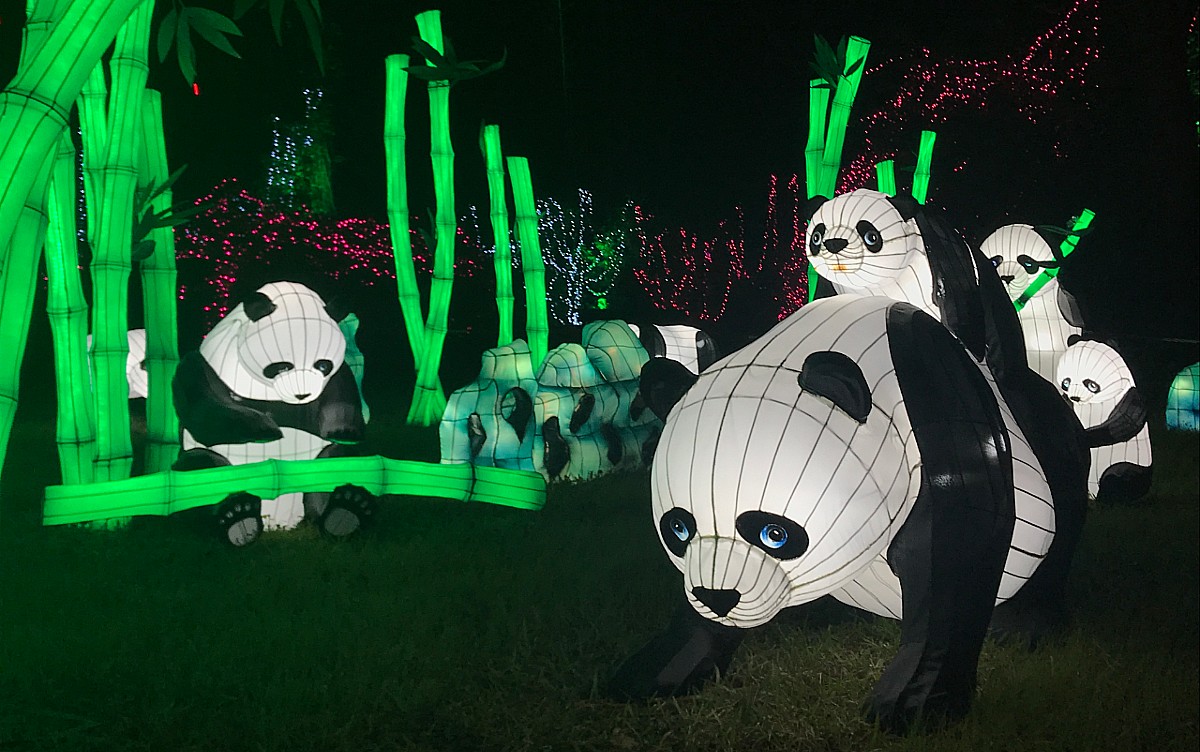


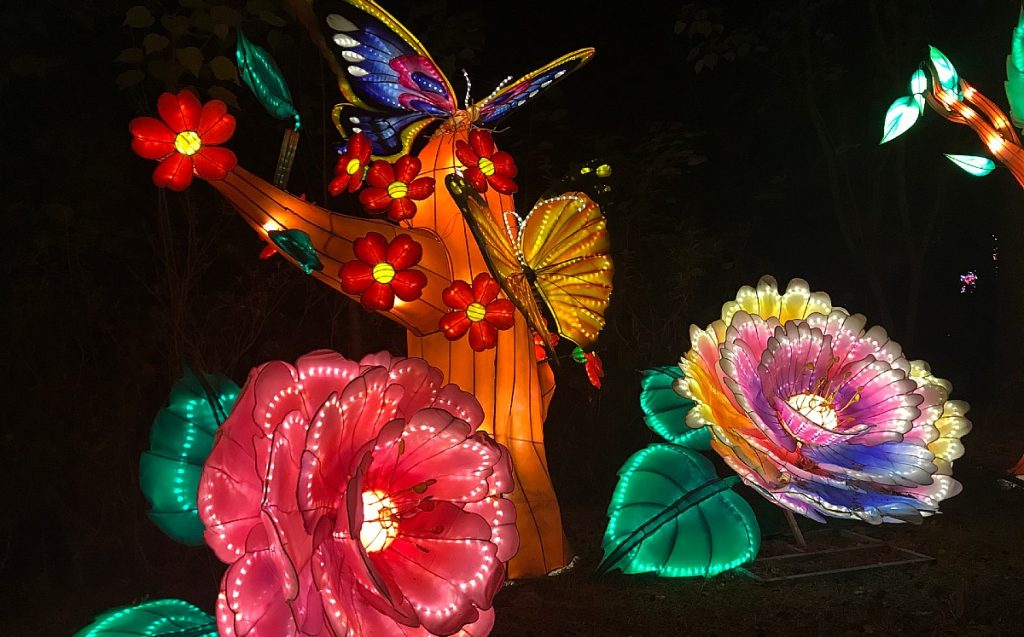
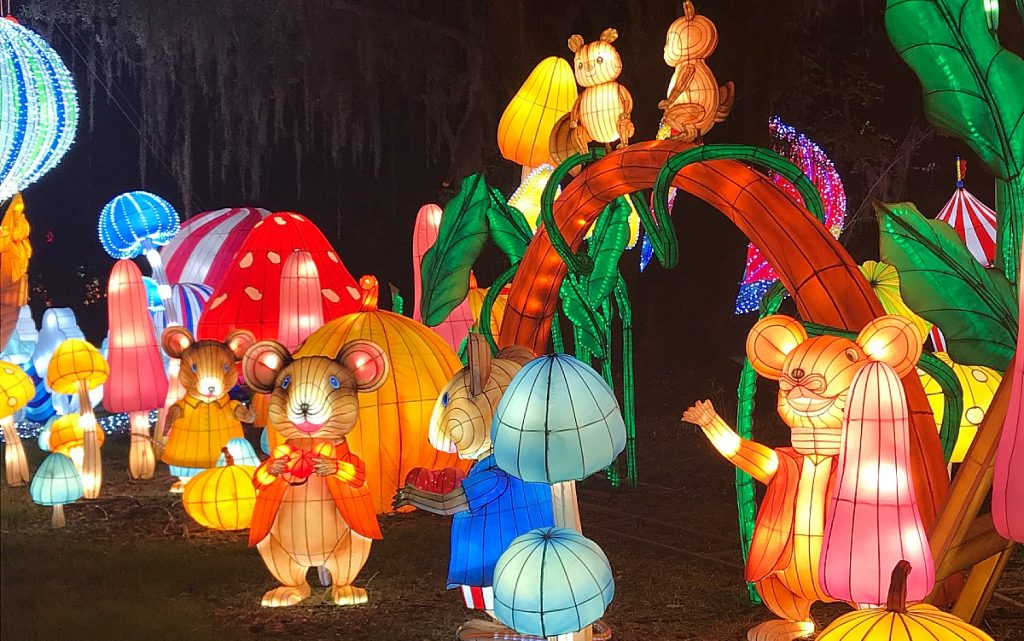
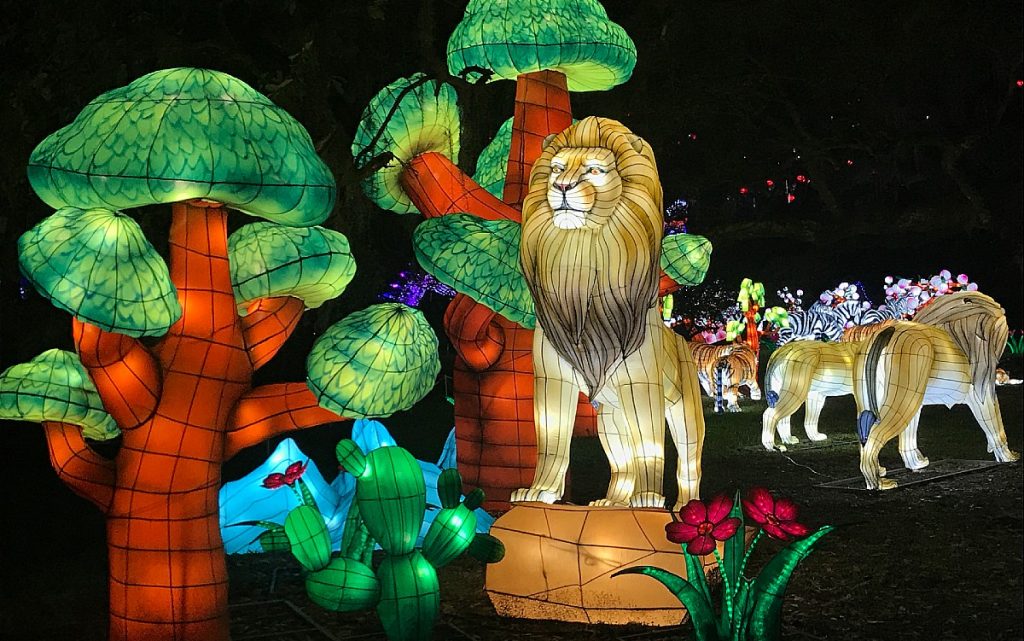
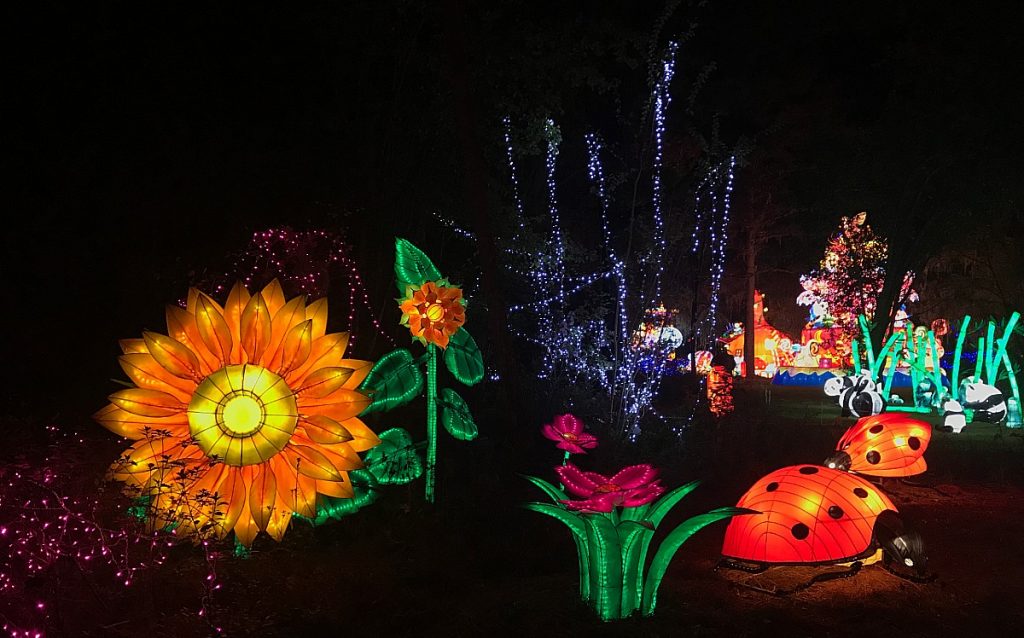
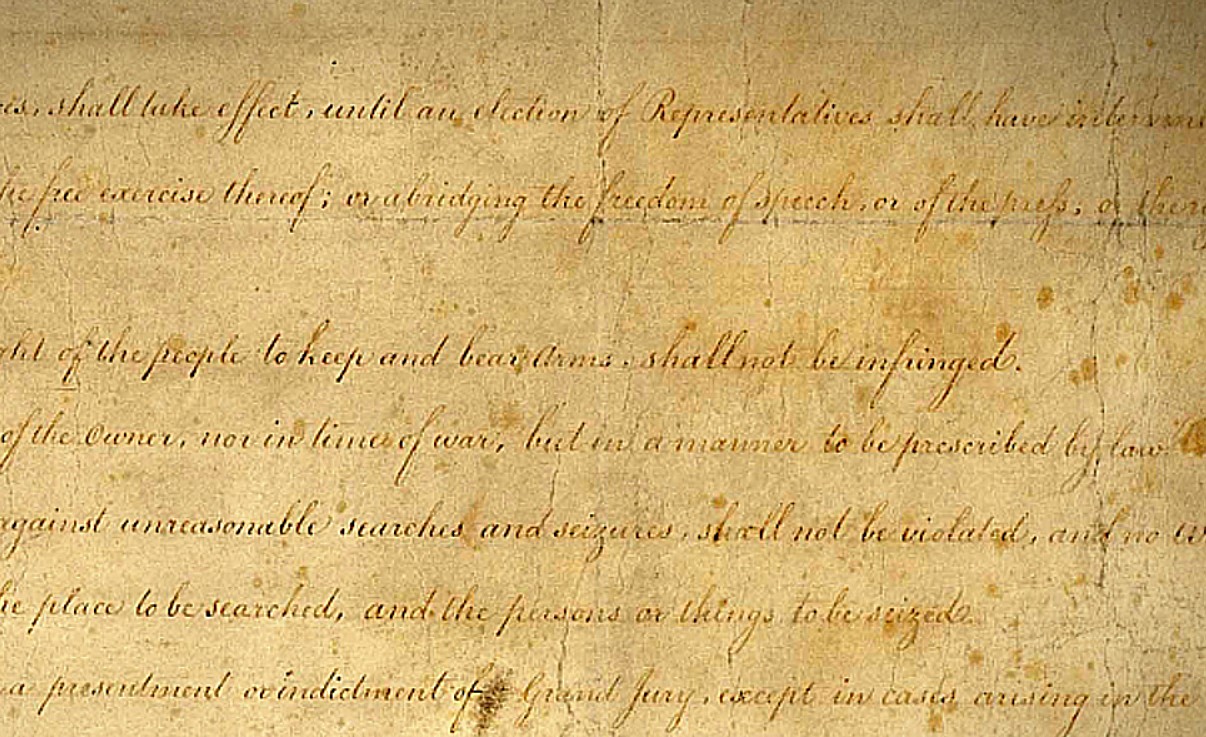
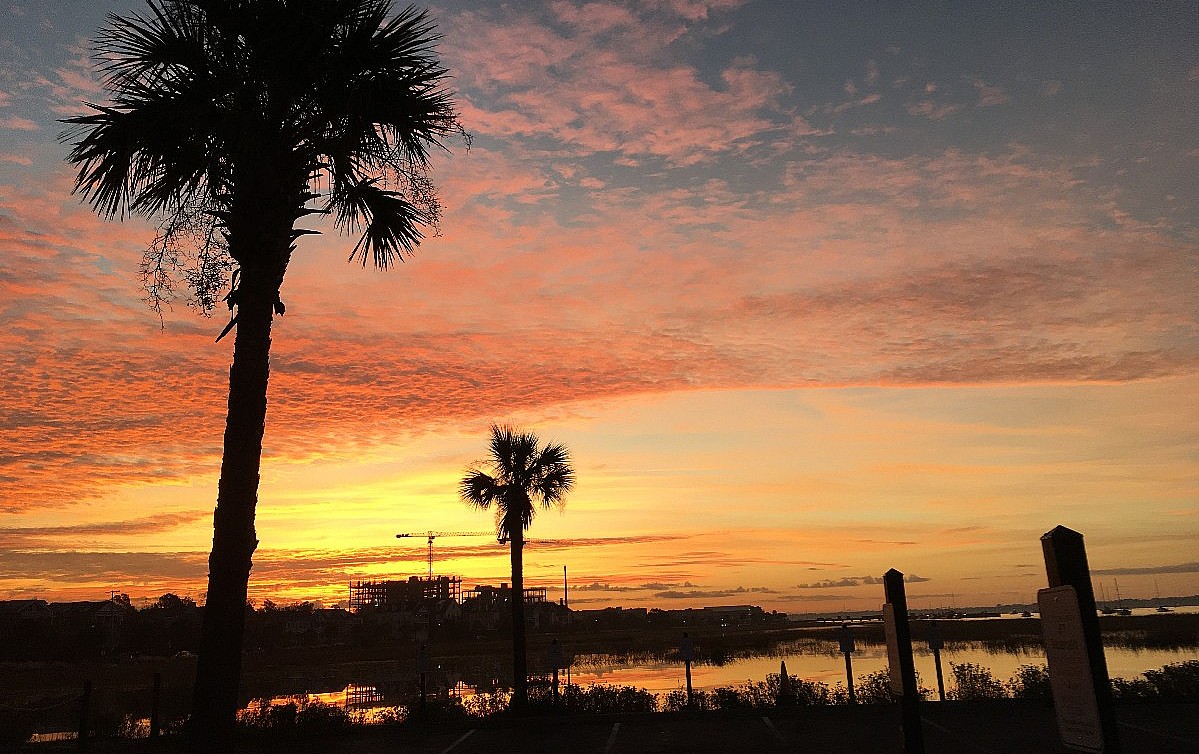
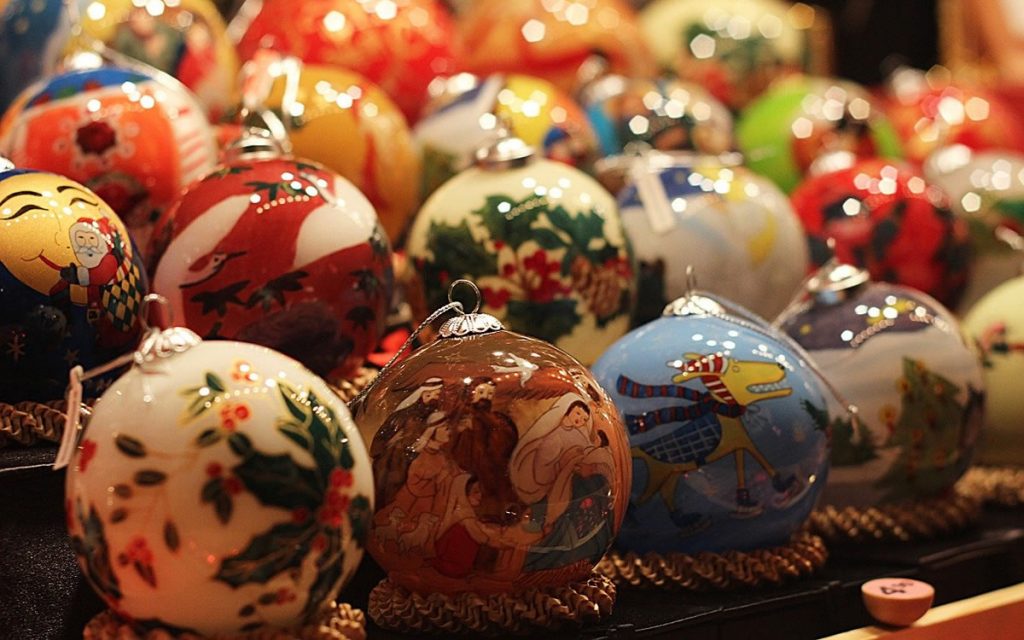

 We Can Do Better, South Carolina!
We Can Do Better, South Carolina!
























